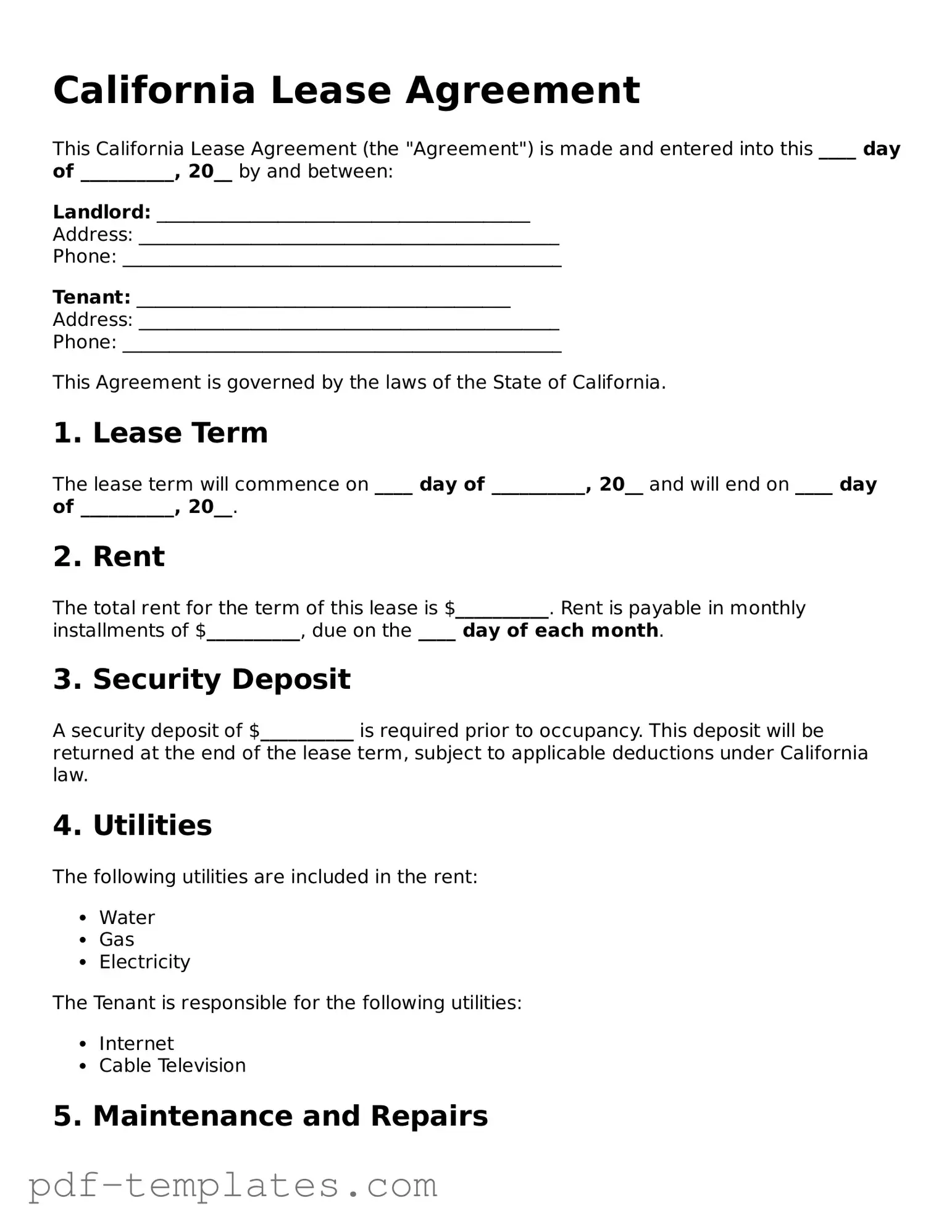The California Rental Agreement serves a similar purpose to the Lease Agreement. Both documents outline the terms and conditions of a rental arrangement between a landlord and tenant. They specify details such as the duration of the tenancy, the rental amount, and the responsibilities of each party. While a lease is typically for a longer term, a rental agreement can be more flexible, often used for month-to-month arrangements. Both documents protect the rights of landlords and tenants and ensure clarity in the rental relationship.
The Commercial Lease Agreement is another document akin to the California Lease Agreement. This type of lease is specifically designed for commercial properties rather than residential ones. Like the California Lease Agreement, it details the rental terms, including payment amounts, duration, and maintenance responsibilities. However, it often includes additional clauses relevant to business operations, such as zoning regulations and permitted uses of the property. Both agreements aim to create a clear understanding between the parties involved.
The Sublease Agreement is similar to the California Lease Agreement in that it allows a tenant to rent out their leased space to another party. This document outlines the terms under which the original tenant (the sublessor) can lease the property to a new tenant (the sublessee). Like the California Lease Agreement, it includes details about rent, duration, and responsibilities. However, it also requires the original landlord's consent and typically addresses the relationship between the original tenant and the subtenant, ensuring all parties understand their rights and obligations.
The Month-to-Month Rental Agreement shares similarities with the California Lease Agreement in its function of outlining rental terms. This document provides flexibility, allowing either party to terminate the agreement with proper notice. It covers essential aspects such as rent, security deposits, and maintenance responsibilities. Both agreements serve to clarify the expectations of the landlord and tenant, but the month-to-month agreement is particularly suited for short-term arrangements, making it easier for tenants who may not want a long-term commitment.
The Roommate Agreement is another document that relates closely to the California Lease Agreement. This agreement is often used when multiple tenants share a rental property. It outlines each roommate's responsibilities, such as rent payments, utility costs, and household chores. While the California Lease Agreement is between a landlord and a tenant, the Roommate Agreement is a private contract among tenants. Both documents aim to prevent misunderstandings and ensure a harmonious living situation.
The Lease Addendum is similar to the California Lease Agreement in that it modifies or adds specific terms to an existing lease. This document can address issues not covered in the original agreement, such as pet policies or maintenance responsibilities. Both documents work together to ensure that all parties are aware of their rights and obligations. The Lease Addendum serves to clarify and expand upon the original terms, ensuring that any changes are documented and agreed upon by all parties involved.
